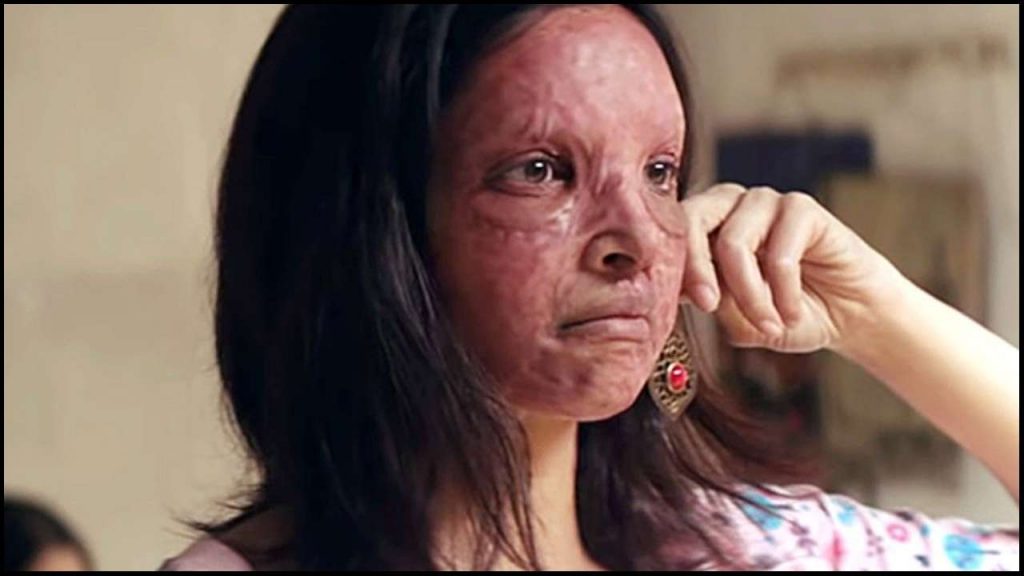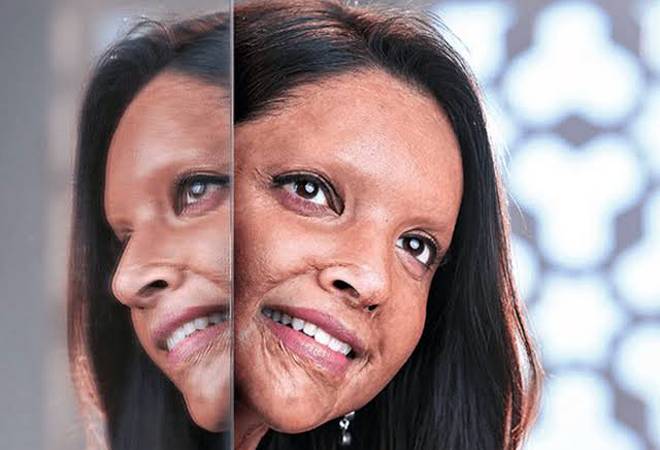When it comes to mainstream Indian film industry, the movies on social causes often prove to be a disappointment. Some are full of savior complex, some are reinstate new stereotypes. Of course, there are a few exceptions, and I think, Chhapaak is one of these notable exceptions.
I hadn’t seen the trailer, but I had seen Deepika Padukone’s interview on a Marathi news channel. Marathi actress Sonali Kulkarni conducted it, and I was quite disappointed because she only focused on the make up and aesthetics. Sonali Kulkarni, contrary to her usual social sensitivity, asked stuff like, “Deepika, when I saw the trailer for the first time, I was so horrified by your look in the movie! How did you bear with that?” or at some point she even asked how Deepika prepared herself mentally for portraying a character that looks like this (and she just kept on rolling over the same thing again and again. Even Deepika looked annoyed afterwards.)
This was my first impression, so I was a little skeptical. But, after watching the movie, my perceptions changed. Here is how.
In a way, Chhapaak portrays the story of an acid attack survivor, and in other way, it shows the general picture of our society that’s responsible for them. There’s no rush, no haste, the movie, in its slow and steady pace, grips the viewer in a chill we experience during a do-or-die situation. In the very first few scenes, they’ve shown the struggle of acid attack survivors while trying to live a normal life, mainly, her struggle to get a job like anyone else does. Though she has capabilities like any other employees, we see the beauty parlor owner rejecting her for her appearance (after so many plastic surgeries) and a corporate boss asking her why she hadn’t mentioned of the attack in her resume (so, can’t she aspire to be treated as a normal human being while applying for a job?)
In a way, Chhapaak portrays the story of an acid attack survivor, and in other way, it shows the general picture of our society that’s responsible for them. There’s no rush, no haste, the movie, in its slow and steady pace, grips the viewer in a chill we experience during a do-or-die situation.
Chhapaak has a few timeline shifts through which we are told the story of Maalti (the protagonist). I am sure, not one person would go out of the theater with dry eyes. Her internal torment, how society looks at her, how it impacts the life of her’s and her family, is well depicted. We also get angry at the insensitive and inconsiderate attitude of people from police to nurses towards acid victims. One of the scenes show Maalti (after surgery) while going through her old belongings like dupatta, earrings, etc. hears the radio jockey say in the background, “Kya aap ki koi adhoori khwaahis rahi hai? Toh agla gaanaa suniye..(Do you have any unfulfilled desires? Then listen to this song.),” and starts playing the song Kal Ho Na Ho (Tomorrow might/might not be). Maalti too, takes notice and asks her mother to throw the radio away, after what had been done to her.

One of the major plus points of the movie is the gaze of the narrative, which is through Maalti, i.e., the survivor’s gaze. And the directors don’t just stop there; they repeatedly establish the fact that we should learn to be good listeners and pass the mic. One such scene was when Maalti calls Amol (the founder of Chhaaya-NGO shown in the movie that worked for acid victims), without listening to her, he keeps talking and explaining her how the job was tough because it dealt with acid victims and how one needs to be emotionally sensitive while working in the organisation. And when she tells him who she was, an acid survivor herself, he is left embarrassed.
Also read: Laxmi Has Taken Up A New Fight: Skin Donation Campaign
Another scene in Chhapaak that takes this message a little further is when the organization passes a milestone in their struggle and Maalti arranges a small party. Amol is shown to be a little nihilistic; he reminds them of their long battle and how they should be working instead of partying. What Maalti says to him is very important. She says, “Do you know what your problem is? You behave as if the acid was thrown on you. But actually, it was thrown on me. And I want to party.” It vaguely reminds me of the common idea of social activism among the elite or privileged sections who have a savior complex. An account on social media once said that these elites want a permanent subject to perform their ‘activism’ for, they want the poor, the marginalized to stay in a constant grief because only then they’d look like a victim and can be ‘saved’. Same as the white photographers who visit the third world to take the most heartbreaking pictures in sepia for the world to take pity on. Their activism makes them forget that everyone has their own right to find happiness and stay happy.
They have made an attempt to cover the reasons behind acid attacks, and it’s not a superficial one. Though not in details, the movie does succeed at pointing out the deeply ingrained patriarchy in the mindsets of Indian men. They don’t respect consent, and to keep the patriarchy functional, they attack any woman who dares to question or rise above the system.
Of course, Amol is not among them; he is a good ally and an activist. Shiraaz aunty (employer of Maalti’s father) and Archana Bajaj (her lawyer) practically show how women can help each other no matter what your daily soaps say. They stand by her side and utilize their privilege in every possible way to help her. Women will also feel jealous of Archana, for having a very co-operative husband. We get to see their blooming relationship even through a very minor side plot. However, Maalti’s mother is an average Indian woman, who gets concerned for Maalti to get late in the evening. Maalti asks her “Ab isse bura aur kya hoga? (What could be worse than this?)”
They have made an attempt to cover the reasons behind acid attacks, and it’s not a superficial one. Though not in details, the movie does succeed at pointing out the deeply ingrained patriarchy in the mindsets of Indian men. They don’t respect consent, and to keep the patriarchy functional, they attack any woman who dares to question or rise above the system. Later, in the court proceedings we get to see the visual demonstration of a typical Indian cis heterosexual man. Typical, because not many here understand/respect consent. We all have, at some point, come across a Babbu Bhaiya (Bashir Khan, the perpetrator) with similar or maybe a little less intensity. For many, seeing Babbu stalking and texting Maalti was triggering, though not surprising. Such a thing is shown in a movie and no woman gets surprised, since it’s a very common experience. How sick our society might be!

Also read: Sheroes Hangout Cafe Run By Acid Attack Survivors Faces Shutdown
Chhapaak repeatedly emphasizes that acid ban is just a temporary or initial step to solve the real problem. We also see how people just don’t want to believe the victim who’s visibly scarred for life, and the perpetrators get on with their lives, their get bails, they get married, have kids. So when the court passes the judgment on acid ban in Chhapaak, despite the character’s happiness, we know at the back of our minds that this is not the end. And we’re proven right in the epilogue scene.
Featured Image Source: Business Today
About the author(s)
Mudita Sonawane studies Physics, Hindustani classical music and government policies. She has represented University of Mumbai in the 9th South Asian Universities Festival. She is an avid observer of politics and takes an interest in Photography and painting as well.





Amazing!